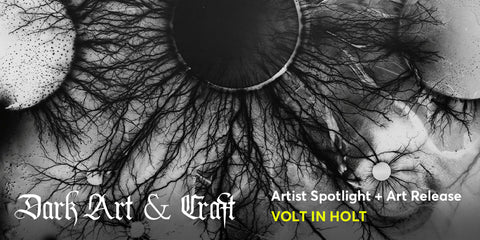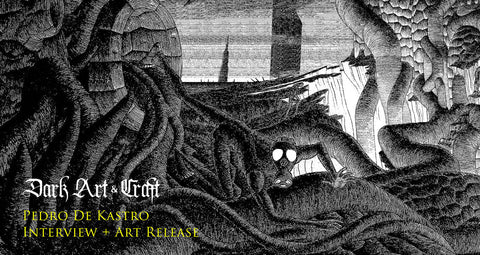
Theatrum Chemicum Britannicum (1652) image via Public Domain Review
Sacred Geometry
"Sacred Geometry" refers to the assigning of sacred connotation to geometric shapes and proportions. The concept is thought to have originated in ancient Greece with the idea that the universe follows a distinct plan or pre-defined pattern. The geometric ideal heavily affected the physical world of religious structures including some of the most well-known; churches, mosques and temples. The concept of holy space extends to sacred groves, Magic Circles, holy altars and modern occult art. Many of the earliest references place "The Creator" or Godhead at the center; a great engineer figure that can be found in such faiths as Hinduism (The Manasara), Christianity and Islam.
One of the earliest known examples of sacred geometry can be found in the art and architecture of ancient Egypt, where geometric shapes and patterns were used to represent cosmic and spiritual principles. These shapes and patterns, which included the pyramid, the circle, and the spiral, were believed to be imbued with sacred properties and were used in the design of temples, tombs, and other sacred spaces.
Similarly, in ancient Greek culture, geometry was considered a divine science, and geometric shapes and patterns were used to represent the principles of the cosmos and the divine. In Hinduism and Buddhism, sacred geometry is also an important aspect of spiritual practices, and geometric shapes and patterns are often used in the design of mandalas, yantras, and other sacred artifacts.

The Metatron Cube a symbol using Sacred Geometry that is a metaphor for the known connected universe.

The dome of the Florence Cathedral. The geometry of the dome is taken from the sphere a representing heaven. Image via Wikipedia
Occult Symbolism
Hermetic occultism and other distinct occult schools use symbols such as; The Unicursal Hexagram, the circled dot (the alchemical symbol for the sun), and the pentacle in practice or identification. The pentacle was an ancient marking of a circled five-pointed star, which was only later pointed upside-down for use in Satanism. The symbol was further altered in the Sigil of Baphomet used by The Church of Satan. Aleister Crowley used the Unicursal Hexagram's powerful shape with a five-petalled flower to represent cosmic forces in the Thelema. The unique pointed star shape in the Unicursal Hexagram can be drawn with one single continuous line.

Sigil of Baphomet used by The Church of Satan

Naberius seal or sigil is the pictorial signature of a Demon or other supernatural being

Eliphas Levi's Baphomet from Dogme et Rituel de la Haute Magie. Image via wikipedia

Robert Fludd's illustration of man the microcosm within the universal macrocosm. Fludd (1574 – 1637ad) was a English physician and author with scientific and occult interests.

Robert Fludd, Utriusque Cosmi, 1619 image vi Wikipedia

"Seal of God" Sigillum Dei Aemeth a magical diagram thought to give power over all creatures (Expect Archangels) by John Dee author of Monas Hieroglyphica

The Eye of Providence or the all-seeing eye of God is often associated with Freemasonry. An early Masonic version is shown here image via wikipedia

Alchemy Sulfur Symbol also known as a 'Leviathan Cross' or 'Satan's Cross' image via wikipedia frequently used to represent Satan The Morning Star.

The Seventy-Two Goetia Sigils from The Book of the Goetia of Solomon the King by S.L. MacGregor Mathers and Aleister Crowley. This file is licensed under the Creative Commons Attribution-Share Alike 4.0 International license.
Occult Symbolism in Dark Art
The general use of Art and symbol in cult and magic rituals has been employed since at least the Neolithic era and was used throughout ancient cultures. These early representations have evolved into a rich Artistic tradition with symbol and markings as diverse as the the sigils of Occultist Austin Osman Spare and symbology of modern avant-garde filmmaker Alejandro Jodorowsky. Beyond providing a visual language for the hidden mysteries of this world, they've also inspired current Artists to incorporate their visual stamp.
Austin Osman Spare was an English artist, occultist, and writer who was active in the early 20th century. Spare was a prominent figure in the British art scene of the time, and his work was exhibited at major galleries and museums. In addition to his art, Spare was also a prominent figure in the occult scene, and his ideas and practices had a significant influence on the development of modern occultism.
In addition to his art, Spare was also interested in the use of magic and the occult for personal transformation and the development of psychic abilities. He developed his own system of magic, which he called "sigil magic," and wrote extensively on the subject. Spare's ideas and practices had a significant influence on the development of modern occultism and continue to be studied and practiced by occultists today.


Letter-press print of the Tree of Life drawn by modern Artist Damien Echols. Image via the Artists Site




Really enjoyed this piece—well-written and thought-provoking.
The exploration of occult symbolism here is rich and layered, and I especially appreciated how you tied it to historical and cultural contexts. quiet interesting work
For anyone looking to explore the topic even further, I recently stumbled across a breakdown of various occult symbols that adds another perspective: Esoteric Knowledge Hub.
Thanks again for sharing this—great work.
Does Satan have his own geometry of his original form before he challenged GOD?
Before Arch Angel Micheal kicked his ass", and “bound” him in darkness. The geometry of Metatron for example is the Universe. What is Satan’s original Mandela? Not at present.
I fortunately came onto your website. I enjoyed the sites. Thanks.